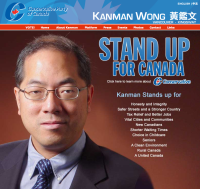Currently, trade journalism and Public Relations, as we have known them, are being blown up and rebuilt. This is an attempt to write down a theory of what we’re trying to build. [Provoked by smart remarks from Russ Beattie and Steve Gillmor, a really wrong, but provocative, phrase from Steve Rubel, and a private conversation with Big Pharma.] [Update: Tons of feedback; my favorite is from Scoble.] [Update: Gosh, some PR people are irritated; I’m shocked... shocked!]
More specifically, Steve Rubel, in the middle of getting a pretty severe smackdown from Russ Beattie, said “If anything, we [PR bloggers] are about bringing transparency to your profession...” and it dawned on me that, no, PR hasn’t been about transparency, not in the slightest. So what should it be about?
Simultaneously, Steve Gillmor came out and said what a lot of us have been thinking: the relationship between blogging and the conventional trade press and analysts is starting to have a zero-sum smell. So do these people have a future, and if so, what is it?
Finally, last week I was talking to a senior marketing person from a major pharmaceutical manufacturer about enterprise blogging, and he asked “But what about the risk that if you turn your employees loose, they’ll make you look bad?” The answer is at the center of everything in the New Public Relations.
The Old Public Relations · The mechanism was easy to write down, it went like this: ¶
Senior management, with a lot of input from marketing people, would work out a company’s message and talking points.
Internal marketing people, working with PR consultants, would try to burn the message into the retinas of the trade press and analysts.
The journalists and analysts would do what they do: the whorish segment of the profession regurgitating the company messages to the attention of very few, the independent thinkers producing sometimes-useful analysis of what the companies were really up to.
It never worked that well; to start with, it was expensive and slow. Also, there was a huge conflict of interest: the journalists and analysts, who positioned themselves as independents, were in fact mostly on the payroll of the companies trying to push the messages.
There’s another obvious problem with this picture: the real experts, the actual people who work at the company who are down in the trenches getting the job done, aren’t in it.
The New Public Relations · The new PR pipeline is a lot shorter, simpler, and wider: ¶
Senior management works out a company’s goals and messages.
Management works hard to make sure that the employees understand them.
The people who are really doing the work tell the story to the world, directly.
Will You Look Bad? · Now let’s address the question from the Big Pharma person: Suppose your employees make you look bad? The answer is obvious: if your employees either don’t understand what your company is trying to accomplish, or can’t do a good job of explaining it, then blogs are the least of your problems. That’s not new. What’s new is that when the information chain’s gatekeepers were the PR people and journalists and analysts, it was a lot easier to run a company from the top down, using traditional Pointy-Haired-Boss techniques. ¶
This is nothing new: The world has a lot of PHBs, and probably always will, and a lot of places will always be badly managed. What’s new is that, in the era of the New Public Relations, well-managed companies—defined as ones where the employees understand the strategy and can communicate it—have one more advantage. This might, in the big picture, make the this whole free-market economy thing work a little better.
No More Intermediaries? · So, can we lay off all the PR people and shut down the trade press? I sure hope not. It seems like we should have room for people out there who make a full-time living observing, and writing about, our profession; but who aren’t whores. Having said that, the business model needs some work, I’m really dubious that an advertising-supported trade press can stay meaningful in the age of the New Public Relations. ¶
Also, we still need events—conferences, unConferences, seminars, beer bashes—and they take a lot of organizing and stick-handling and I suspect that PR pros have the right sort of social-convener skills to deliver value from such things.
I’m not against information intermediaries; but the days of command-and-control PR are pretty well over. We, the bloggers, are going to go on telling the world what we’re doing for a living and why it matters, and we’re going to do it in our own voices, and we’re going to be simultaneously biased and eccentric and authoritative, because that’s how life is. If our company has a sane strategy and we believe in it, then the world is going to come to understand it.
You, the information professionals, you can aggregate us or repurpose us or debate with us or debunk us. But this big fat pipe with everyone’s voice roaring through it? It’s not closing.

